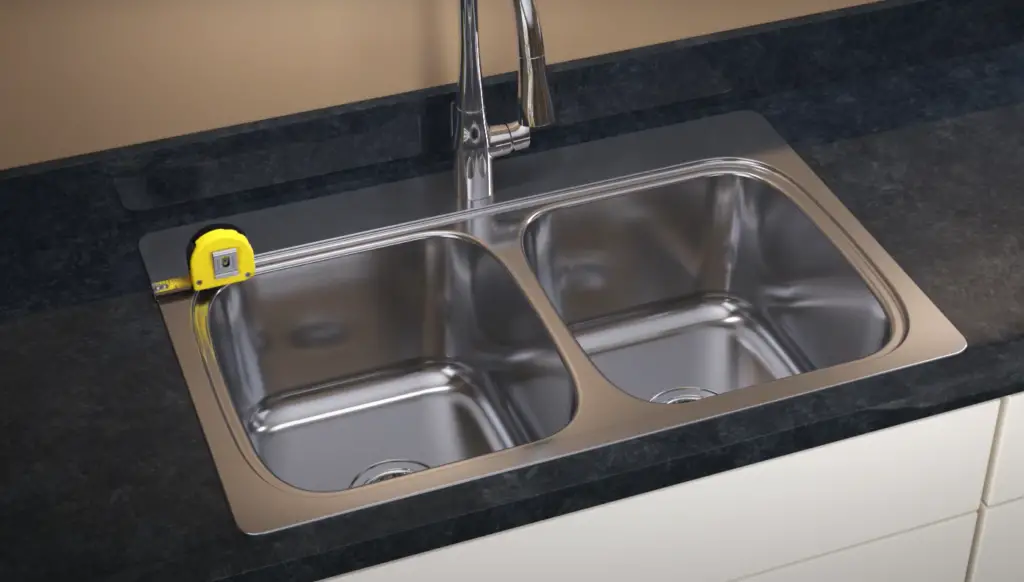
How Are Kitchen Sinks Measured: A Comprehensive Guide
Are you planning to replace or install a kitchen sink but don’t know where to start when it comes to measurements? You’re in the right place. In this detailed guide, we will walk you through the process of how to measure a kitchen sink and provide insights into how are kitchen sinks measured, how to measure sink, and other essential steps. Whether you’re looking to replace an old sink or install a new one, understanding the measurements is crucial. We’ll also discuss kitchen sink measurements and the standard size of a kitchen sink to help you make informed decisions.
Understanding the Basics: How to Measure a Kitchen Sink
1. Measure Sink Width
To begin, let’s focus on how to measure sink width. This step is fundamental as it determines the maximum width your new sink can be. Measure the available space inside your cabinet, ensuring it can accommodate the sink you desire.
2. Measure Sink Length
In addition to width, you need to know how to measure sink length. Again, this measurement should match the available space within your kitchen cabinet. Accuracy is key.
3. Determine Sink Depth
The kitchen sink measurements should also include its depth. Measure from the top of the sink to the bottom. This step ensures that the sink’s depth is suitable for your specific needs.
4. Check for Sink Lip
If you’re replacing an existing sink, it’s vital to measure for a sink lip or flange that sits on the countertop. This measurement is particularly important for drop-in sink replacements.
5. Countertop Opening
For those considering undermount sinks, knowing how to measure for a sink opening in your countertop is crucial. This measurement will determine the size of the sink that fits snugly beneath.
Special Considerations for Measuring Kitchen Sinks
6. Double vs. Single Bowl Sinks
Now, let’s explore how to measure kitchen sink variations. Decide whether you want a single bowl sink or a double bowl sink. For the latter, remember to measure each bowl’s dimensions.
7. Corner Sinks
If you’re planning to install a corner sink, measuring the corner’s angle and the available space is essential to ensure a proper fit.
8. Farmhouse Sinks
Farmhouse sinks have unique installation requirements. Measure the cabinet space and ensure it can accommodate the apron front of the sink.
9. Bar or Prep Sinks
For those considering bar or prep sinks, measuring the available space in your bar or prep area is essential. These sinks come in various sizes to suit your needs.
Standard Sizes of Kitchen Sinks
10. Standard Sink Sizes
Most kitchen sinks come in standard sizes, such as 24 inches for single bowls and 33 inches for double bowls. Ensure your measurements align with these industry standards.
11. Depth Standards
Regarding how to measure a kitchen sink, you should know that standard sink depths usually range from 6 to 12 inches. Measure according to your preferences and requirements.
12. Corner Sink Standards
If you’re considering a corner sink, familiarize yourself with the standard corner cabinet dimensions to find a compatible sink.
FAQs About Kitchen Sink Measurements
Can I install a larger sink if I have the space for it?
Absolutely, you can install a larger sink if your cabinet space allows it. However, ensure your measurements are accurate to prevent any fitment issues.
What is the standard size of a kitchen sink drain opening?
The standard size for a kitchen sink drain opening is 3.5 inches in diameter.
Can I replace a drop-in sink with an undermount sink?
Yes, you can replace a drop-in sink with an undermount sink, but you may need to modify your countertop to accommodate the new sink style.
Are there sinks with adjustable sizes?
While some sinks come with adjustable features, these are relatively rare. It’s crucial to measure accurately to find a sink that fits your space.
How do I measure for an undermount sink?
To measure for an undermount sink, determine the cabinet opening’s dimensions, ensuring it matches the sink’s size.
What if my kitchen cabinet is an unusual size?
If your cabinet doesn’t conform to standard sizes, you may need to consider custom-made sinks or make adjustments to your cabinet.
Measuring a kitchen sink may seem daunting, but with the right approach and accurate measurements, you can ensure a seamless installation or replacement. Remember to consider your kitchen’s specific requirements, whether it’s a standard sink, a specialty sink, or a unique cabinet space. Armed with this knowledge, you’ll be ready to select the perfect kitchen sink for your needs.
Now that you have a comprehensive understanding of how to measure a kitchen sink and related considerations, it’s time to put your knowledge into action and transform your kitchen with the perfect sink!